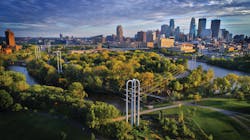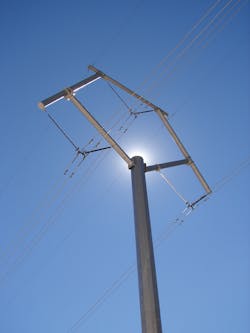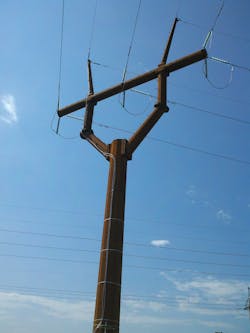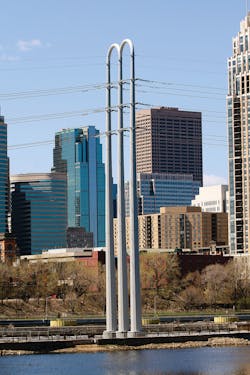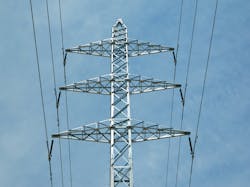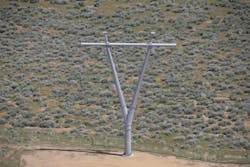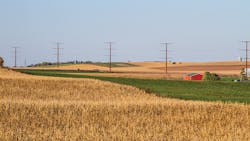It's Easier To Spell Than To Sell Aesthetics
Power delivery projects require a logical progression of design choices to satisfy structural and electrical requirements. The visual characteristics that result from these design choices can and should be influenced purposefully by the engineer to incorporate aesthetics economically, but how?
General infrastructure projects, such as buildings or bridges, integrate aesthetic principles while also satisfying structural and economic criteria. The public expectation of these projects compels aesthetic considerations throughout the design and budgeting process. For power delivery projects, however, these expectations are not as well connected, nor is the human-structure relationship.
Although the electric grid obviously is critical infrastructure for modern society, people do not naturally associate overhead power lines with the personal convenience of turning on lights or charging a device. The challenge is even greater when considering it is more difficult for the public to relate to the scale and shape of transmission structures in the same way as other structures in the built environment. For example, individuals personally can associate with buildings because they occupy them and bridges because they drive across them, but there is no similar relationship with transmission lines.
And, while they cannot be occupied or driven across, transmission structures are very much part of the modern landscape. As such, overhead lines are observed in the context of the built environment, but they visually are consumed, processed and judged without the same symbiotic relationship benefits. Adding to the challenge is the reality transmission structures are uniquely and oddly shaped for reasons the public has little appreciation for. Therefore, their visual attributes are judged differently than buildings and bridges. Yet, the public has increasingly higher expectations of aesthetically pleasing structures, which is impacting the industry’s ability to execute projects.
Functional Artwork
What would happen if overhead line designers viewed their project as functional artwork? While that may sound over the top and best left to architects, aesthetics actually can complement the functional, economic and operational safety of transmission structural designs. Where do aesthetics fit into the design process?
Engineers prefer to steer clear of the unfamiliar realm of aesthetics for many reasons. However, the American Society of Civil Engineers (ASCE) supports aesthetic quality in engineering design. Recognizing engineering designs can enhance or detract from the environment by virtue of the quality of their visual characteristics, Policy 117 states: “As aesthetics are integral to good engineering design and sustainability, the cost of aesthetic quality should also be integral to design and construction budgeting. Aesthetic quality should be an element of the planning, design, construction, operations, maintenance, renovation, rehabilitation, reconstruction and security enhancement of the built environment.”
Per ASCE’s rationale, aesthetic harmony should exist between civil engineering designs and the environment within which these designs are constructed. The environment is both natural and built, and its aesthetic qualities should be preserved and enhanced by design. Basic design qualities seldom can be added economically after a project has been constructed. Therefore, visual quality and aesthetics must be considered throughout the life cycle of the project.
Aesthetic quality can be achieved in ways that maintain and even enhance functional quality. Examples of this from the utility industry are gaining early public approval and being open to the possibility of changes in design that may improve functionality of the initial design. While, power delivery engineers are skilled at satisfying difficult functional specifications, the opportunity to influence designs aesthetically is waiting to be explored.
Think Aesthetics First
In large part, building architects and bridge designers measure their success by achieving the artistic impression formed in their mind’s eye at the beginning stage. This approach of beginning with the end in mind is a key starting point, creating an opportunity to step back and frame a holistic vision of what the finished project will be in the context of its surrounding environment. Aesthetic consideration intrinsically is part of the designer’s overall execution process.
The traditional engineering design process for power delivery projects is driven first and foremost by functional parameters with relatively little consideration for the resulting outward aesthetics. However, by developing a greater understanding of how visual impacts are linked to functional drivers, the aesthetic quality of power delivery infrastructure projects can be enhanced in subtle and significant ways. Like the building and bridge industry, if the power industry is mindful how visual impacts are interwoven within the early design process, the opportunity to purposefully influence aesthetics can be achieved economically.
Learning a New Language
The power industry has given varying levels of attention to aesthetics in the past ranging from very sophisticated works that inspire to basic checkboxes that accommodate public participation. Recently, an ASCE task committee published a report on “Aesthetic Design of Electric Transmission Structures.” The primary purpose was to provide a starting point for designers to grow in their aesthetic knowledge, appreciation and skill.
This effort sprang from discussions among engineers on the standard committee updating ASCE 48 Design of Steel Transmission Pole Structures, which now includes “aesthetic” as part of the geometric considerations. It is almost as important to clarify “aesthetic” does not mean all power delivery structures should be attention-grabbing landmarks like the stylized Mickey Mouse head structure outside Disney World. Rather, it connotes a responsibility of being contextually sensitive and as aesthetically pleasing as functionally practical.
It seeks to avoid structures that are unnecessarily awkward by not missing the opportunity to influence visual qualities during the design process. This aesthetically pleasing objective is far less cut and dried than meeting standard formulaic criteria and explains why it usually elicits skeptical reactions from many in the industry. The argument quickly shifts to cost, but there again, being more tasteful during the design development usually can be cost neutral in view of the overall energized project.
So, while it is more elusive than other design considerations, it is within the designer’s ability to become more comfortable with and adept at considering aesthetics. The committee report referenced above dedicates a whole section to learning the language of aesthetics in a fundamental way as it relates to the unique challenges power delivery projects present.
Where Rubber Meets the Road
Electrical engineers in the industry are well aware transmission structures must support electrical conductors reliably and maintain safe clearances under all kinds of atmospheric conditions. Plan and profile models are created, and load and configuration drawings are developed to satisfy the laws of physics at play. Other influential forces define much of the playing field before the line designer and structural engineer start spotting structures and developing the structural systems and member size selections.
Governing bodies, public representatives, landowners, financing entities, permitting authorities and environmental agencies are among a host of stakeholders providing input for power delivery projects. This all begs the questions of when, where and how to effectively consider aesthetics.
Where are the key moments in the project cycle that afford the opportunity to purposefully influence the visual quality of the finished product? How can this perspective be part of the conversion at the earliest stages of project development? The goal is to have these perspectives represented in the room where it happens. Awareness of the cause-and-effect dynamic between the functional drivers and consequential visual impacts is missing far too often.
Everyday Aesthetic Consideration
Voltage level can have a direct impact on the height and outline of the structure as higher voltages typically require larger structures and wider rights-of-way corridors. Drawing a parallel between the electrical requirements and their visual impact can direct a designer to think about how different voltage and configurations will be viewed.
Route alignment, span lengths and profile topography can have a direct correlation to how often the structures will be viewed, by whom and from where. Occasionally, installing a unique signature structure will provide the required aesthetic flare for that exceptional situation.
Construction and maintenance requirements are more critical for serviceability and safety, but designers should consider the aesthetic impact and do what they can to accommodate visual quality. Right-of-way access, working space and climbing systems all can have an impact on the overall balance and texture of the structure.
The allowable footprint can dictate whether guy wires or a multi-legged structure can be used, and deflection limits also can dictate the visual impact the final structure will have. The appropriate deflection mitigation must be used along with the taper, camber or rake of the structure to ensure the aesthetics of the final product leave no question to structural integrity.
Mechanical properties and physical arrangements of the insulators and hardware also can have a dramatic impact on the aesthetics of a structure. Synthetic, porcelain and glass insulators all have different aesthetic properties that may be a benefit or detriment, depending on the location selected for them.
Adaptations
Today, the industry has many choices when it comes to choosing structural material and structure type: steel, concrete, wood, and composite materials are available in a variety of finishes and structural shapes and configurations. All these advancements can impact the look and feel of the power line dramatically. Selecting material on a spectrum from blending to contrasting provides designers some control over the final aesthetics of their creation.
Understanding the balance between the existing landscape, the economics of different routes, structure outline, voltage, footprint and the public sentiment will enable the designer to increase acceptance of the line while ensuring functionality is not sacrificed. By being creative in the standard design process, ranging from functional to fantastic, aesthetic appeal can be catered to any project.
In addition to designing and constructing the infrastructure that supports the advancement of society, engineers should take pride in their projects as functional artwork. Being the catalyst to positively influence public opinion on transmission projects is a noble cause where all parties win.
Kenneth Sharpless ( [email protected]), P.E., F.ASCE, F.SEI, has a bachelor’s degree in architectural engineering from The University of Texas and is a Harvard Business School general management program (GMP) graduate. He is chair of ASCE 48 Design of Steel Transmission Pole Structures and past secretary of ASCE 123 Design of Pre-stressed Concrete Transmission Pole Structures. He is a member of both the ASCE Aesthetic Design of Electric Transmission Structures and Structural Engineering Institute’s Aesthetics in Design committees.
